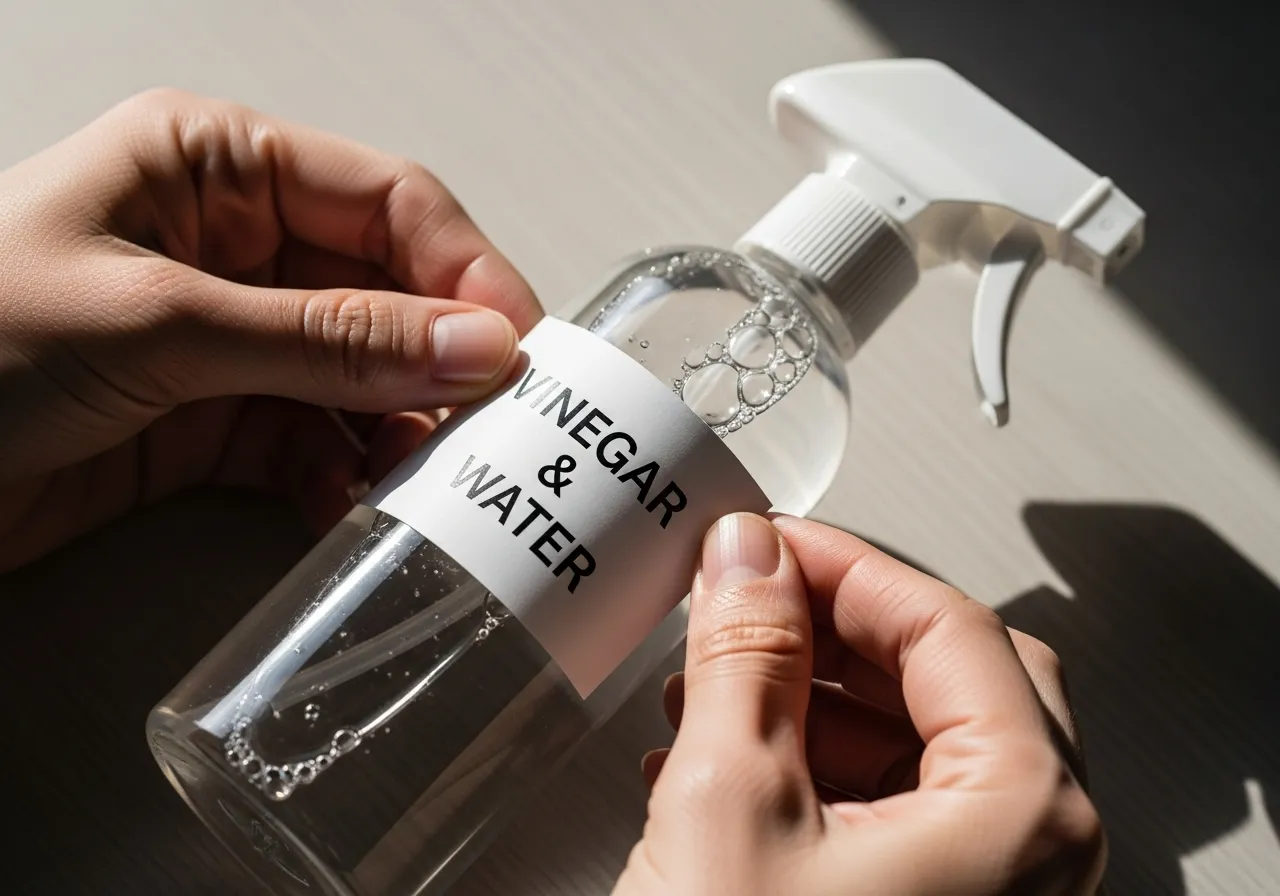
Your Natural Pest Control Toolkit: Simple, Effective Remedies
Once your kitchen is clean and you understand what attracts pests, you can employ a few simple, natural remedies to deter any lingering scouts and handle minor issues. These homemade solutions are inexpensive, easy to make, and free from the harsh chemicals found in many commercial pesticides. However, “natural” does not always mean “harmless.” It’s important to use them correctly and safely.
A Word on Safety First: Always label your homemade spray bottles clearly with their contents and the date they were made. Store them out of reach of children and pets. When you try any new cleaner, always do a patch test on a small, inconspicuous area first to ensure it doesn’t damage the surface. And remember the cardinal rule of cleaning safety: Never mix different cleaning products, especially bleach with ammonia or acids like vinegar. A dangerous chemical reaction can occur. Also, do not mix hydrogen peroxide and vinegar in the same container, as it can create a corrosive acid.
Remedy 1: The Ant Trail Eraser (Vinegar and Water Spray)
This is the first thing you should reach for when you spot a line of ants. It cleans your surfaces while simultaneously destroying the invisible pheromone trail they rely on for navigation.
The Recipe:
In a clean spray bottle, mix a solution of 1 part white vinegar to 1 part water. For example, use one cup of vinegar and one cup of water. Shake gently to combine.
How to Use It for Ants:
First, observe the ants to find their trail. Look for their entry point, which could be a tiny crack in a windowsill or a gap under a door. Spray the solution directly onto the ants you see and along the entire path they are using. Let the solution sit for a minute or two. This is called “dwell time,” and it allows the acidic vinegar to work on the pheromones. Then, use a paper towel or cloth to wipe up the ants and the solution. Dispose of the paper towel outside. Repeat the spray-and-wipe process over the entire trail, paying special attention to the entry point.
Surface Compatibility: This spray is a fantastic cleaner for many surfaces like laminate countertops, ceramic tile, and glass. However, do not use vinegar-based cleaners on natural stone surfaces like granite, marble, or travertine. The acid can etch and dull the stone’s finish. It’s also not recommended for unsealed grout or some waxed wood floors.
Remedy 2: The Simple Fruit Fly Trap
If you have fruit flies buzzing around, this simple trap is remarkably effective at reducing their numbers while you work on eliminating their source.
The Recipe:
Pour about an inch of apple cider vinegar into a small bowl or jar. Add one or two drops of liquid dish soap to the vinegar. Do not stir it in too vigorously; you just want it to break the surface tension of the liquid.
How to Use It:
Place the bowl on the counter near where you see the most fruit fly activity. The scent of the fermenting apple cider vinegar will attract them. When they land on the liquid to take a drink, the soap will have broken the surface tension, causing them to fall in and drown. Check the trap daily and replace the mixture every few days until you no longer see any fruit flies.
Remedy 3: Homemade Bug Spray for Kitchen Deterrence
Many insects are repelled by strong scents that we find pleasant. A simple aromatic spray can be used along baseboards, windowsills, and other potential entry points to make your kitchen less appealing to crawling pests.
The Recipe:
In a spray bottle, combine 1.5 cups of water with either 10-15 drops of peppermint essential oil or tea tree essential oil. A teaspoon of witch hazel can be added to help the oil and water emulsify, but it’s not strictly necessary. Shake well before each use, as the oil and water will separate.
How to Use It:
Lightly mist this solution in areas where pests might enter or hide. This includes along the back of countertops, under the sink, around window frames, and along baseboards. This is not a contact killer but a deterrent. The goal is to create a scent barrier.
Pet Safety Warning: Be extremely cautious when using essential oils around pets. Many oils, including peppermint and tea tree, can be toxic to cats and dogs, especially cats. If you have pets, it is best to avoid this remedy or consult your veterinarian first. Never spray it directly on or near your pets or their food and water bowls.
Remedy 4: Food-Grade Diatomaceous Earth (DE)
Diatomaceous earth is a non-toxic powder that can be a powerful tool against hard-shelled insects like cockroaches, ants, and silverfish.
What It Is:
DE is made from the fossilized remains of tiny aquatic organisms called diatoms. The powder looks soft to us, but on a microscopic level, it’s very sharp and absorbent. It’s crucial to use only food-grade DE, not the kind used for pool filters, which is chemically treated and dangerous to inhale.
How It Works:
DE is a mechanical insecticide, not a chemical poison. When an insect crawls through the fine powder, the sharp particles scratch its waxy outer exoskeleton. The powder then absorbs the oils and fats from the insect’s body, causing it to dehydrate and die.
How to Use It Safely:
Use a puffer bottle or a dry, soft paintbrush to apply a very thin, barely visible layer of DE in dry, out-of-the-way places where pests travel. Good spots include the back of and underneath cabinets, under the refrigerator and stove, and into cracks and crevices. Avoid inhaling the dust; it’s a good idea to wear a simple dust mask during application. DE is only effective when it’s dry, so it’s not suitable for damp areas. It works slowly but provides long-lasting protection as long as it remains undisturbed.

















